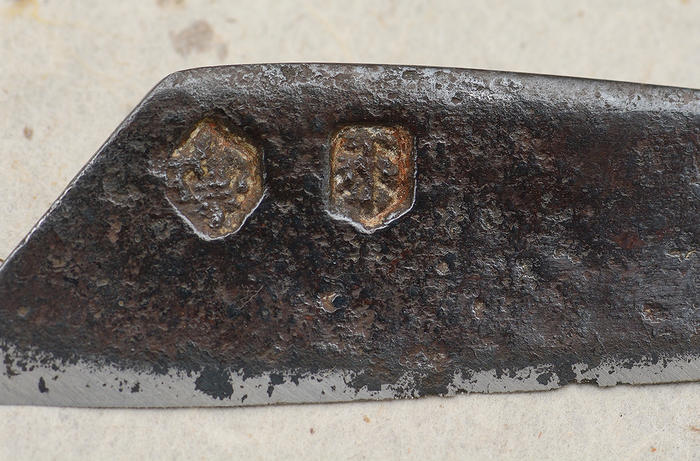Results 11 to 15 of 15
-
01-16-2016, 11:55 PM #11

It's basically just a rusty piece of steel. Whether it is what the seller claims or not would be irrelevant to me because it's lost it's functionality. I don't collect razors to look at, I collect them to use. I might give him $20 for it as a novelty value but that would be it.
-
10-13-2016, 02:14 PM #12

After doing some extensive research I ended up getting this one. More to follow, but I'm quite sure it is a shaving razor, and I think it is of south German origin, or a region in the area. [I don't believe the bit on the soldier's razor or whatever - apparently it was owned by a family that fled Russia after the revolution. There's some backstory there but I don't know what it is.] The blade is definitely hollow ground, and the spine tapers with the width just like a modern razor does. There seems to be a lot of good steel left under a layer of iron oxide, so I intend to hone it (leaving the major chips in place).


-
10-13-2016, 02:30 PM #13Senior Member



- Join Date
- Apr 2012
- Location
- Diamond Bar, CA
- Posts
- 6,553
Thanked: 3215
Nice, how did you remove the rust?
-
10-13-2016, 02:42 PM #14
-
The Following User Says Thank You to ScienceGuy For This Useful Post:
Euclid440 (10-13-2016)
-
10-14-2016, 05:19 PM #15

Here is a small compilation of some 16-17th century depictions and surviving items. At least in the 16th century, Walther Ryff writes that depicted razors could be used either for removing hair, or for surgical cutting, so it seems that they may have been double duty.

In comparison to one of the Kunstschrank razors from Augsburg region in the early 1600s, the resemblance is pretty striking:

-


 41Likes
41Likes LinkBack URL
LinkBack URL About LinkBacks
About LinkBacks






 Reply With Quote
Reply With Quote
